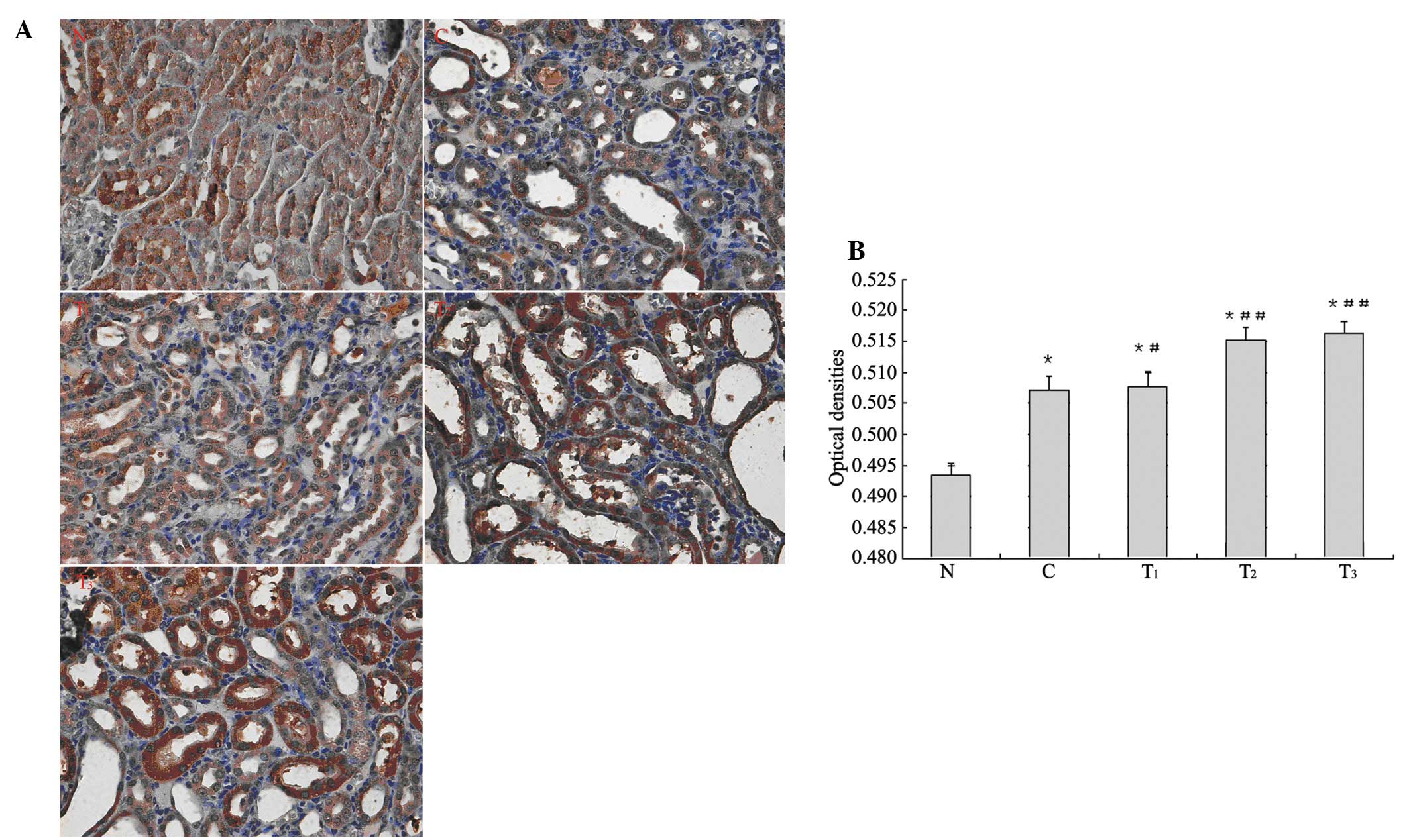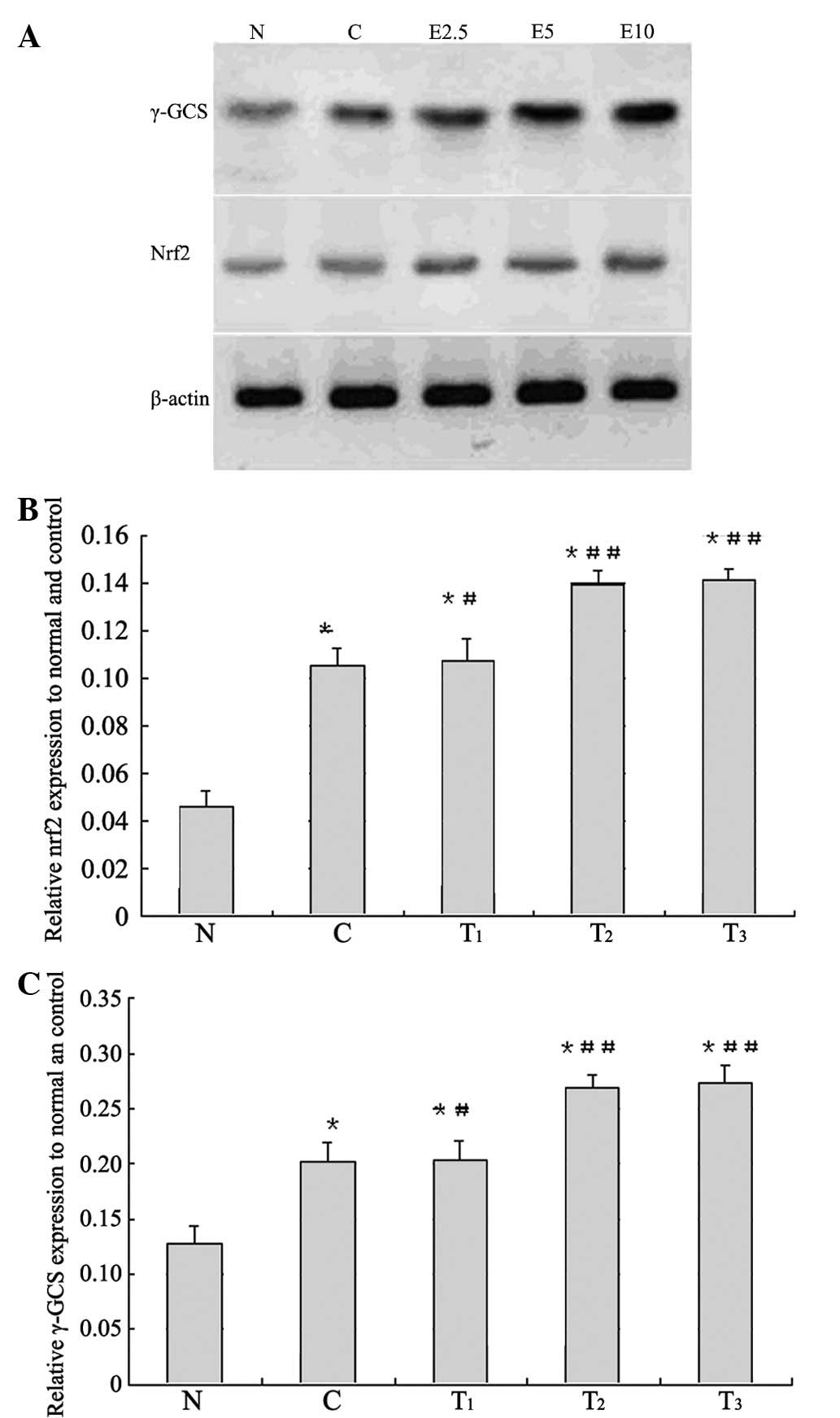Therapeutic potential of EGCG on acute renal damage in a rat model of obstructive nephropathy
- Authors:
- Published online on: January 28, 2013 https://doi.org/10.3892/mmr.2013.1296
- Pages: 1096-1102
Metrics:
Total
Views: 0 (Spandidos Publications: | PMC Statistics:
)
Total PDF Downloads: 0 (Spandidos Publications: | PMC Statistics:
)
Abstract
As a major active component in green tea, (-)-epigallocatechin 3-O-gallate (EGCG) has many anti-oxidative activities. This study investigated whether intraperitoneal administration of EGCG was capable of suppressing oxidative stress in rats with unilateral ureteral obstruction (UUO) and probed the potential mechanisms involved. In total, 150 adult male rats were randomly divided into 5 groups (n=30 each): the control group (group N); the unilateral ureteral obstruction (UUO) group (group C), where the unilateral ureter was ligated resulting in an obstructive nephropathy model; and the EGCG group (group T), following unilateral ureteral ligation, rats were intraperitoneally injected with EGCG at a dosage of 2.5 (T1), 5 (T2) and 10 mg/kg/day (T3). Each group of rats was sacrificed 72 h after surgery. We evaluated the effects of EGCG on the reactive oxygen species (ROS), reduced glutathione (GSH), oxidized glutathione (GSSG) and glutathione in the renal tissue of rats. Immunohistochemistry and western blot analysis were applied to detect nuclear factor erythoid-derived 2-related factor 2 (Nrf2) and γ-glutamylcysteine synthetase (γ-GCS) protein expression. Real-time PCR was performed to detect the mRNA levels of Nrf2 and γ-GCS. Changes in renal ultrastructure were also observed using electron microscopy. There was no significant difference in GSH, and compared with group N, ROS, GSSG and total GSH levels were much higher in the T groups (p<0.01), while much lower than those of group C (p<0.01). Protein levels of Nrf2 and γ-GCS and the mRNA levels of Nrf2 and γ-GCS notably increased in EGCG-treated rats (all p<0.05). Furthermore, electron microscopy showed that renal ultrastructure was improved in the treatment groups. Our findings suggest that, resulting from suppression of oxidative stress influenced by free radicals, EGCG exerts a protective effect on rats with obstructive nephropathy, and this anti-oxidative effect may be partly induced by activating the Nrf2 signaling pathway.
















